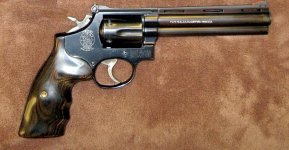I have read a number of threads concerning grips to give one a better hold on the Shield. Little has been said about grips specifically to reduce the sting of recoil.
I would appreciate any recommendations regarding a brand and model of grips that you think would better buffer the shock to my arthritic hands than gloves.
Practicing with my .40 Shield is a pleasure except for the punishment I receive from the recoil during a session in which I put between 150 and 250 rounds downrange.
I would appreciate any recommendations regarding a brand and model of grips that you think would better buffer the shock to my arthritic hands than gloves.
Practicing with my .40 Shield is a pleasure except for the punishment I receive from the recoil during a session in which I put between 150 and 250 rounds downrange.

